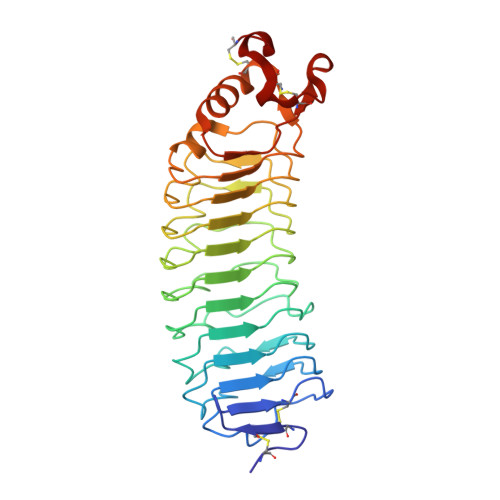Structure of the Nogo Receptor Ectodomain. A Recognition module implicated in Myelin Inhibition.
He, X.L., Bazan, J.F., McDermott, G., Park, J.B., Wang, K., Tessier-Lavigne, M., He, Z., Garcia, K.C.(2003) Neuron 38: 177-185
- PubMed: 12718853
- DOI: https://doi.org/10.1016/s0896-6273(03)00232-0
- Primary Citation of Related Structures:
1OZN - PubMed Abstract:
Failure of axon regeneration in the adult mammalian central nervous system (CNS) is at least partly due to inhibitory molecules associated with myelin. Recent studies suggest that an axon surface protein, the Nogo receptor (NgR), may play a role in this process through an unprecedented degree of crossreactivity with myelin-associated inhibitory ligands. Here, we report the 1.5 A crystal structure and functional characterization of a soluble extracellular domain of the human Nogo receptor. Nogo receptor adopts a leucine-rich repeat (LRR) module whose concave exterior surface contains a broad region of evolutionarily conserved patches of aromatic residues, possibly suggestive of degenerate ligand binding sites. A deep cleft at the C-terminal base of the LRR may play a role in NgR association with the p75 coreceptor. These results now provide a detailed framework for focused structure-function studies aimed at assessing the physiological relevance of NgR-mediated protein-protein interactions to axon regeneration inhibition.
Organizational Affiliation:
Department of Microbiology and Immunology, Stanford University School of Medicine, Stanford, CA 94305, USA.

















